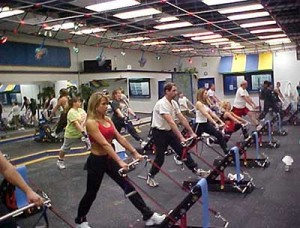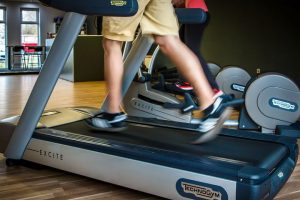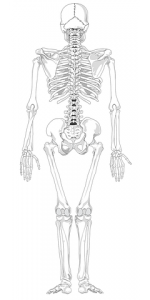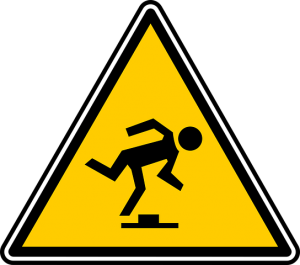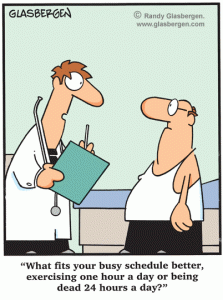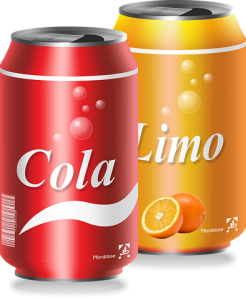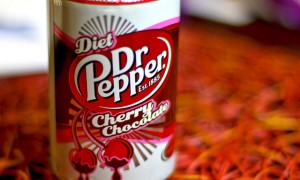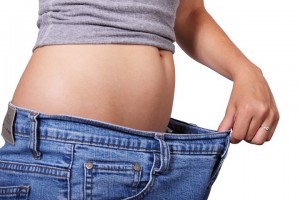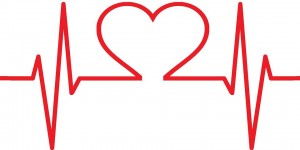There’s a time for everything, including a best time to work out. Scheduling fitness to coincide with your energy peaks improves results as well as making you more likely to stick with a workout program. If losing weight is one reason you’re exercising, it turns out timing your meals is a critical factor for that goal, too. People who struggle with dieting have found success when they started paying less attention to counting calories and focused on the clock instead.
The Science

The best news about TRF is that you don’t have to avoid certain foods or count calories. Eat pretty much whatever you want during your 10-hour eating window.
The concept behind what some are calling the Time Diet is that instead of restricting what you eat, you limit the hours during which you eat. A study published in Cell Metabolism found that overweight subjects who restricted themselves to a 10-hour eating window in each 24 hour period lost weight. What’s more, they didn’t count calories or cut out carbs. They simply cut themselves off from food at a certain time and didn’t begin eating again until after 14 hours had passed.
Maybe even better news is that you don’t have to adhere to time-restricted feeding (TRF) all the time. A similar study performed on mice showed that lean mice who were subjected to TRF during the week and allowed to free-feed, eating whenever they wanted over the weekend, were able to maintain their lean, fit physiques.
So, how is it that when you eat matters more than how much? The truth is that limiting your eating window may cause you to eat less overall, so there is an element of reduced calories with TRF. However, counting calories and measuring portions isn’t a part of this strategy, so you can eat pretty much what you want and until you’re truly full. That means you won’t feel deprived and, therefore, won’t be tempted to binge. The biggest factor, though, may be how your body reacts to the mini-fast. Your body goes through a repair process between meals, during which it breaks down toxins, produces cellular repair substances, and repairs damaged DNA. At around the 12-hour mark of a fast is when this process peaks, so allowing your body to do this vital work without interrupting it to digest and process more food allows it to work optimally. Additionally, your body will burn stored fat for energy to perform the repair process during the mini-fast.
Implementing a Time Diet
If you’re wondering what kind of results you can expect with TRF, they vary depending on the individual. One woman reported losing 6 pounds in 5 months and one man’s results were a loss of nearly 30 pounds. Physical activity and quality of diet have everything to do with how much you lose; the woman with the 6-pound weight loss is thrilled with her results because she says she’s eating more deserts now than before and doesn’t feel like she’s on a diet at all. It’s interesting to note that people using TRF also showed improved health by way of lowered blood pressure, more stable blood glucose, as well as cellular benefits associated with slowing the aging process.

It doesn’t matter what time of day you choose for a TRF eating window–only that you stick to just eating during your chosen 8 to 10 hours.
Putting TRF to work in your own life is relatively simple. Preliminary findings even suggest that it doesn’t matter what time of day you choose to open your eating window, just as long as you close it again after 8 to 10 hours. So, it can be from 10 a.m. to 8 p.m. or 6:30 a.m. to 4:30 p.m. Even starting with a 12-hour eating window can be beneficial, especially if you currently graze for 15 or more hours per day. Start off with 12 hours, then cut back an hour each week until you’re at least down to a 10-hour window each day. If you’re happy with your results after about 6 months, feel free to keep it there. If not, cut back some more until you’re down to an 8-hour window. A sample day of eating might look like this:
7 a.m.—coffee (cream and sugar if desired) or juice
10 a.m.—omelet, yolks and all, with cheese and veggie add-ins, if you like
1 p.m.—grilled chicken, salad, baked potato or rice, bread or roll and butter
3 p.m.—coffee with a small scone or two biscotti
5 p.m.—grilled steak with herb-butter pasta, roasted vegetables, or salad of leafy greens
6 p.m.—small dessert of your choice, if you want it—chia pudding, frozen yogurt, even a cupcake!
You’ll notice that the food choices are leaner, though not all of them are items you’d expect to find on a d-i-e-t. Naturally, if you want to see results with any eating strategy, the smarter choices you make, the quicker and longer-lasting results you’ll get. So, no, don’t fill your eating hours with doughnuts, triple cheeseburgers, and deep-fried everything. Feel free to have a few of those treats in moderation, but don’t overdo it.
Working It In With Working Out
Including exercise with a TRF eating plan will enhance your results and increase your fitness, which is always a bonus. However, you’ll want to make sure to schedule your workouts at optimal times for your personal energy peaks as well as after you’ve eaten. The TRF sample above is ideal for the most common peak energy time of 11 a.m. to about 2 p.m. You can have your 10 a.m. meal, work out at noon after digesting for 2 hours, then eat your midday meal at 1 p.m. Alternatively, work out in the afternoon at 3 p.m. and have a protein bar or shake around 2:30 p.m. in place of taking a coffee break. An evening work out after you’re finished eating for the day is yet another choice. Whatever works best for your schedule and energy peaks should be easy to work in with a TRF eating plan for optimal weight loss.






